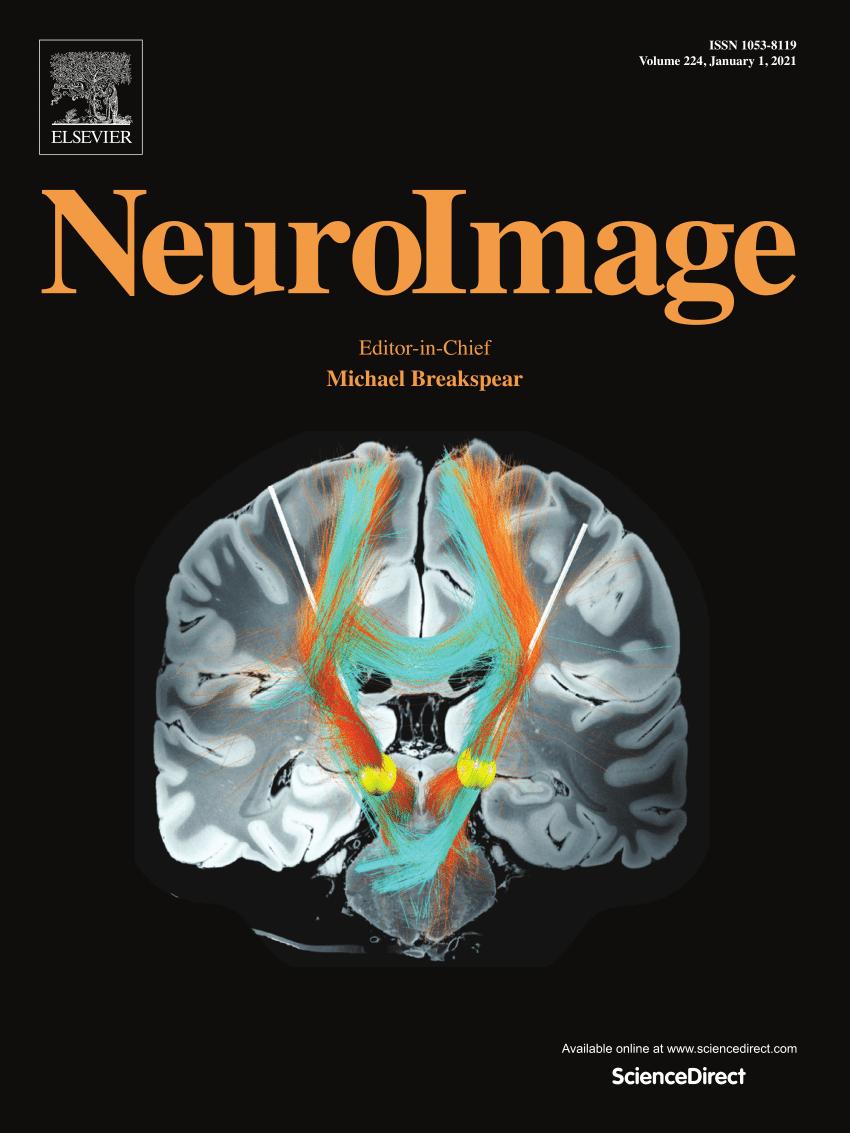Cortical neural activity during responses to mechanical perturbation: Effects of hand preference and hand used
IF 4.5
2区 医学
Q1 NEUROIMAGING
引用次数: 0
Abstract
Handedness is an important feature of human behavioral lateralization that has often been associated with hemispheric specialization. Existing neuroimaging research on the effect of handedness during motor control has focused on well-practiced or predictable tasks, but not tasks that involve unpredictable perturbations. We examined the extent to which handedness (measured by self-reported hand preference) and whether the dominant hand is used or not influence the motor and neural response during unimanual voluntary corrective actions. The experimental task involved controlling a robotic manipulandum to move a cursor from a center start point to a target presented above or below the start. In some trials, a mechanical perturbation of the hand was randomly applied by the robot either consistent or against the target direction, while electroencephalography (EEG) was recorded. Fourteen left-handers and fourteen right-handers completed the experiment. Left-handed individuals had a greater negative peak in the frontal event-related potential (ERP) during the initial voluntary response stage (N140) than right-handed individuals. Furthermore, left-handed individuals showed more symmetrical ERP distributions between two hemispheres than right-handed individuals in the frontal and parietal regions during the late voluntary response stage (P380). To the best of our knowledge, this is the first evidence to demonstrate the differences in the cortical control of voluntary corrective actions between left-handers and right-handers.

对机械扰动的反应中的皮质神经活动:手偏好和手使用的影响。
利手性是人类行为偏侧化的一个重要特征,通常与大脑半球专业化有关。现有的关于运动控制过程中偏手性影响的神经影像学研究主要集中在训练有素或可预测的任务上,而不是涉及不可预测扰动的任务。我们研究了用手性(通过自我报告的手偏好来衡量)和是否使用优势手在单手自愿纠正行动中影响运动和神经反应的程度。实验任务包括控制一个机器人操纵器,将光标从中心起始点移动到起始点上方或下方的目标。在一些试验中,机器人随机施加与目标方向一致或相反的机械扰动,同时记录脑电图(EEG)。14名左撇子和14名右撇子分别完成了实验。在初始自愿反应阶段(N140),左撇子个体的额叶事件相关电位(ERP)负峰高于右撇子个体。此外,在自愿反应后期,左撇子个体在额叶和顶叶区域的ERP分布比右撇子个体更为对称(P380)。据我们所知,这是第一个证明左撇子和右撇子在自发纠正行为的皮层控制上存在差异的证据。
本文章由计算机程序翻译,如有差异,请以英文原文为准。
求助全文
约1分钟内获得全文
求助全文
来源期刊

NeuroImage
医学-核医学
CiteScore
11.30
自引率
10.50%
发文量
809
审稿时长
63 days
期刊介绍:
NeuroImage, a Journal of Brain Function provides a vehicle for communicating important advances in acquiring, analyzing, and modelling neuroimaging data and in applying these techniques to the study of structure-function and brain-behavior relationships. Though the emphasis is on the macroscopic level of human brain organization, meso-and microscopic neuroimaging across all species will be considered if informative for understanding the aforementioned relationships.
 求助内容:
求助内容: 应助结果提醒方式:
应助结果提醒方式:


